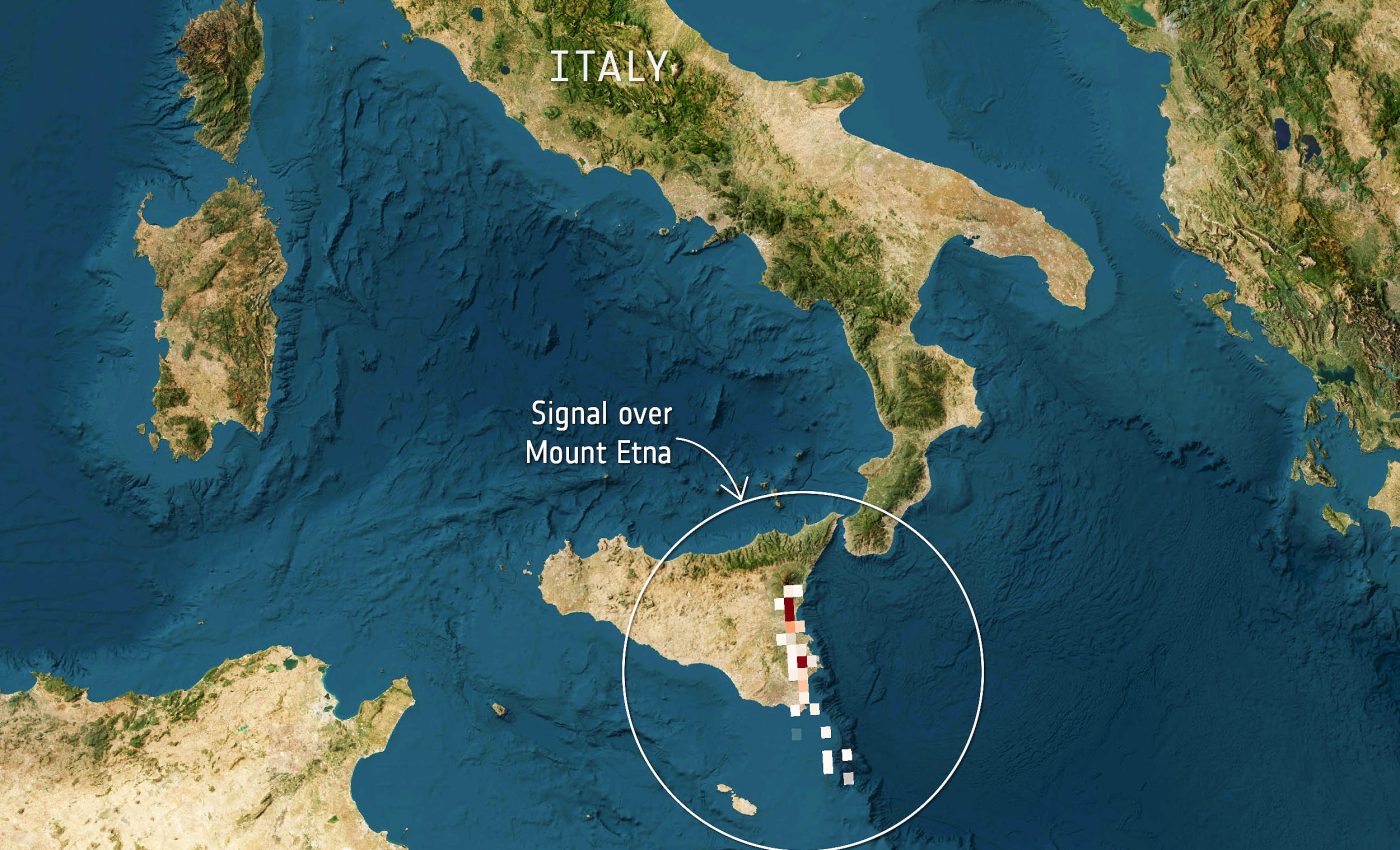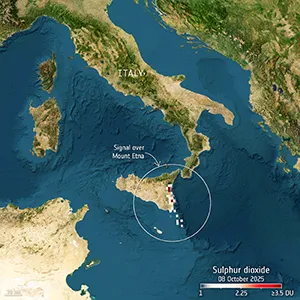
First images from Sentinel-4 reveal air pollution hotspots around the world
A powerful new satellite called Sentinel-4 just sent back its first images of air pollution over Europe and northern Africa.
While the satellite is not fully up and running yet, those early snapshots are already giving scientists a clearer view of what we’re breathing every day.
This new mission is part of a larger push to understand and track air quality like never before – not just once a day, but every hour. That’s a huge leap from the old way of doing things.
How Sentinel-4 sees air pollution
Most satellites move from pole to pole, scanning different parts of the Earth as the planet spins beneath them.
Sentinel-4 takes a different approach. It stays in one place, hovering over the same stretch of Earth – Europe and northern Africa – from about 22,000 miles up in a geostationary orbit.
That fixed position lets it keep constant watch and send hourly updates. And that’s important.
Pollutants like nitrogen dioxide, sulfur dioxide, and ozone don’t stay still – they shift quickly.
Catching those changes in real time helps scientists track how pollution spreads and when it peaks, which is especially important for people with asthma, heart disease, or other health issues.
The satellite collects this data by measuring sunlight that bounces off Earth and its atmosphere. Buried in that light are signals from different gases.
The satellite breaks the light down and picks out those signals, showing what’s in the air and how much of it is there.
And because it’s using ultraviolet, visible, and near-infrared light, it can detect a wide range of harmful substances – even ones we can’t see or smell.
Monitoring pollution from space
Although Sentinel-4 only launched in July of 2025, it’s already showing signs of strong performance.
The spectrometer is riding along on the Meteosat Third Generation Sounder – a weather satellite – which helps Europe get more value from a single mission.
ESA scientist Ben Veihelmann noted that Sentinel-4 is the first European mission that will deliver hourly air-quality observations.
“By capturing fast changes in air pollution, Sentinel-4 is a game-changer for monitoring and forecasting air quality over Europe.” said Veihelmann.

Early data points to success
The satellite is still in its testing phase, but even the first data has scientists excited.
“We are extremely happy to see these first preliminary results, and my thanks go to everyone involved in the mission,” said Didier Martin, ESA’s Sentinel-4 Project Manager.
“Firstly, and arguably most importantly, they confirm that Sentinel-4 is healthy, and that the calibration and the data processing chains are on track.”
According to Martin, this essentially means that it is well on the road to becoming Europe’s first mission dedicated to delivering hourly measurements of air pollutants across the continent.
What the early images revealed
On October 8, Sentinel-4 captured its first real data. One image showed levels of nitrogen dioxide – a gas mostly released by cars, power plants, and heating systems that burn fossil fuels.
High levels were spotted along the Mediterranean and over northern Italy’s Po Valley. But not everywhere showed up – clouds can block Sentinel-4’s view of nitrogen dioxide.
One of the early images from Sentinel-4 caught a plume of sulphur dioxide rising off Mount Etna, the volcano in Sicily.
The eruption wasn’t major, but the gas stretched southeast over the sea – a clear sign that even a relatively quiet volcano can still leave a mark on the atmosphere.
Sulphur dioxide doesn’t only come from volcanoes. It’s also released by ships burning high-sulphur fuel and by coal-fired power plants. It’s a toxic gas on its own and also helps create fine particles that pollute the air and pose serious health risks.
Capturing ozone levels
Sentinel-4 also recorded ozone levels. Way up in the stratosphere, ozone shields us from harmful ultraviolet radiation.
But closer to the ground, it becomes a pollutant – one that can cause breathing problems and worsen conditions like asthma.
The image showed more ozone over the Balkans and Greece, and less over the Baltic region. That pattern lined up with data from other satellites tracking the same day.
The last image wasn’t about pollution. It showed what the satellite sees using false colors, based on the first full spectrum of light coming from Earth.
You could clearly make out land, sea, and clouds – a good sign that everything is working.

Sentinel-4’s real mission starts soon
Once Sentinel-4 goes live, it’ll be sending hourly updates on pollutants that affect the air millions breathe every day.
The readings – including gases like nitrogen dioxide and ozone, along with aerosols and other harmful substances – will help experts stay ahead of changes in air quality.
That stream of data will feed directly into the Copernicus Atmosphere Monitoring Service, which is responsible for tracking air pollution across Europe and helping predict when and where conditions might worsen.
“We are very proud to contribute to this important mission, together with our key partners – the European Commission and Eumetsat, and our dedicated industrial teams,” said Simonetta Cheli, ESA’s Director of Earth Observation Programmes.
“It truly demonstrates the power of collaboration. The mission is still in its commissioning phase, but these first results clearly show that everything is functioning well. These initial glimpses are extremely encouraging.”
“We now look forward to Copernicus Sentinel-4 becoming fully operational in the coming months, and to seeing how its data will enhance air-quality assessments and provide critical input for pollution forecasting,”
—–
Like what you read? Subscribe to our newsletter for engaging articles, exclusive content, and the latest updates.
Check us out on EarthSnap, a free app brought to you by Eric Ralls and Earth.com.
—–













